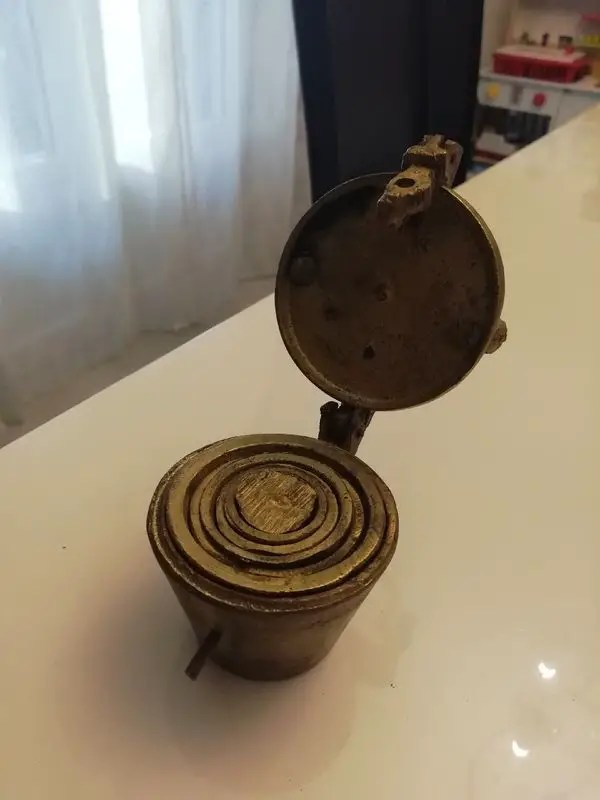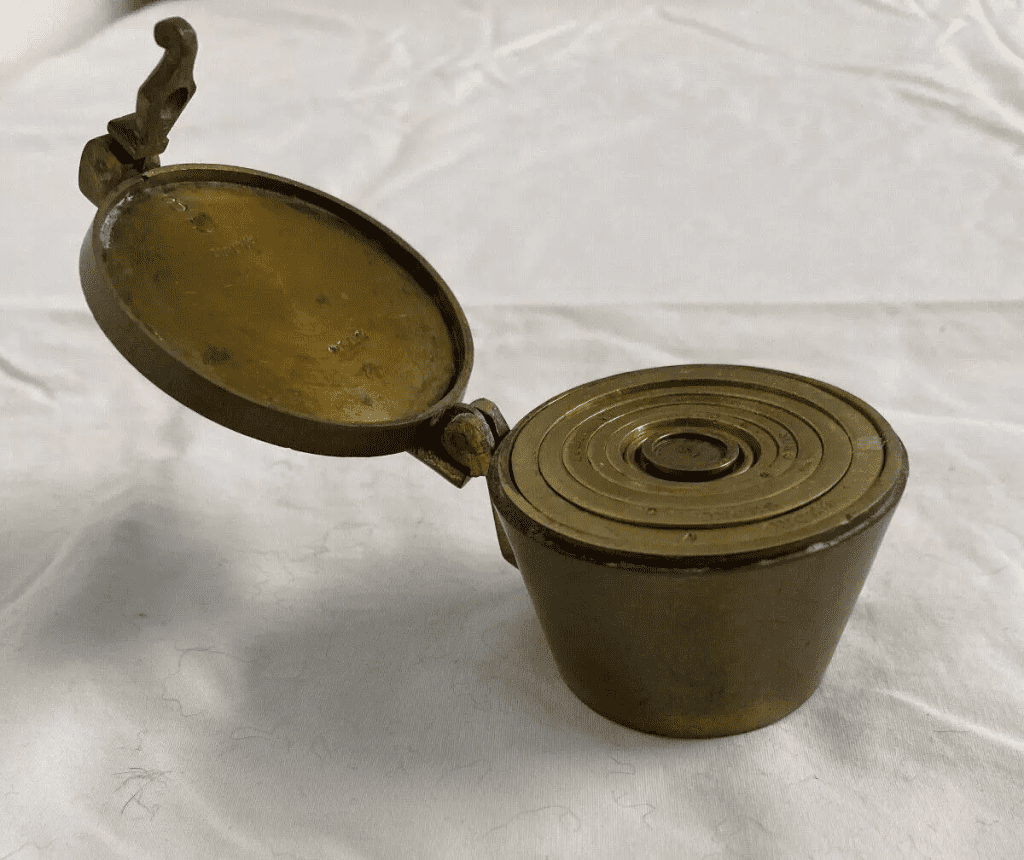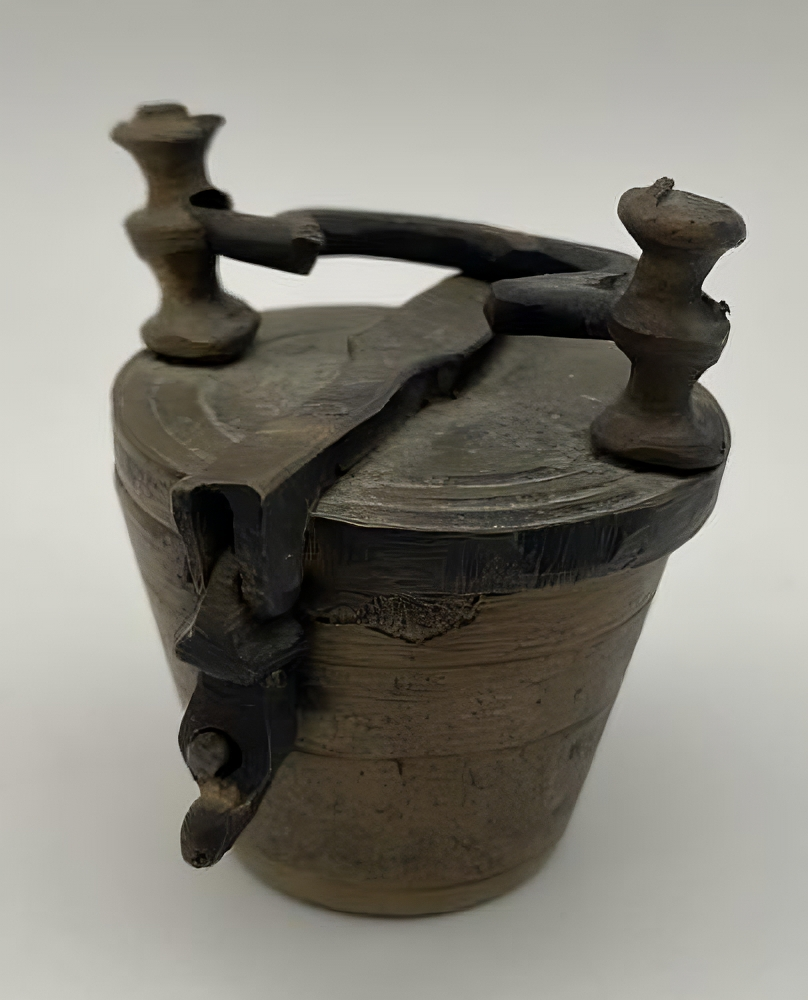Antique objects often hold a piece of history, and if you’ve come across small brass cups that nest neatly inside one another, latching closed, you might just have discovered a set of antique apothecary scale weight cups. These artifacts were once essential tools in the world of medicine and trade, dating back centuries, and they continue to intrigue collectors and historians alike. Let’s explore the fascinating history, craftsmanship, and value of these unique items.
What Are Antique Apothecary Scale Weight Cups?

Antique apothecary scale weight cups are small brass or metal containers that were once used by apothecaries and pharmacists to measure precise quantities of ingredients. The cups fit inside each other, forming a compact set, and were used with balance scales to weigh powders, herbs, and chemicals for medicinal purposes.
These weight cups weren’t just tools of trade; they represented the high level of precision that was required in the early practices of medicine. Each cup would correspond to a specific weight, allowing the apothecary to create accurate dosages for remedies and treatments.
Historical Significance of Apothecary Scale Weight Cups
In the 18th and 19th centuries, apothecaries were the equivalent of today’s pharmacists. They were responsible for preparing medicinal mixtures, tinctures, and treatments, and accurate measurements were critical. Even slight miscalculations in the quantity of an ingredient could impact the safety or efficacy of a medicine.
These brass scale weight cups, often part of a larger set used with balance scales, were key to this process. Before the advent of digital or even mechanical scales, balance scales and weight cups were the most reliable method for ensuring precision. Apothecaries used them to weigh out individual ingredients, many of which were potent substances requiring precise dosages.
Design and Craftsmanship: Function Meets Art
Antique apothecary scale weight cups are not just utilitarian objects; they are also beautifully crafted artifacts. Made typically from brass, bronze, or other durable metals, these cups were designed to last and withstand daily use in a busy apothecary shop. The cups often came in sets, with each cup marked with its corresponding weight.
Intricate Designs and Engravings
What makes these pieces stand out is their detailed craftsmanship. Many sets feature intricate engravings that denote their weight or manufacturer, and some were even adorned with decorative elements. These engravings not only served a functional purpose, helping the apothecary quickly identify the correct weight, but they also added an aesthetic value to the object.
The precision in the manufacturing of these cups is a reflection of the skill of the artisans who made them. Even though they were small, they had to be crafted with exact measurements to maintain accuracy in the weighing process. The cups were sometimes enclosed in a latching case, further protecting them and adding to their charm.
Materials and Preservation: How These Cups Have Stood the Test of Time

The metals used to make apothecary scale weight cups were chosen for their durability. Brass, in particular, was favored for its resistance to corrosion and wear, making it ideal for everyday use in an apothecary setting.
Aged Patina and Antique Appeal
Over time, the brass often develops a patina—a greenish or brownish film on the surface that occurs due to oxidation. This patina is highly prized by collectors, as it adds an authentic aged look to the item and enhances its antique appeal. The condition of these cups can vary, but well-preserved sets with intact engravings or minimal wear are especially valuable.
Why Collectors and Historians Value Antique Apothecary Scale Weight Cups
For collectors of medical antiques or vintage pharmacy tools, apothecary scale weight cups are prized possessions. They represent not only the history of medicine but also the evolution of precise measurement tools. Historians value these cups for the insight they provide into the daily practices of apothecaries and pharmacists from centuries past.

Factors That Influence Their Value
The value of antique apothecary scale weight cups depends on several factors, including their age, condition, and rarity. Sets that are complete and in excellent condition with all cups present will command higher prices. Cups that come with original cases, or that have detailed and legible engravings, also tend to be more valuable.
Some apothecary weight sets can fetch hundreds or even thousands of dollars, depending on their historical significance and craftsmanship. Unique sets with elaborate designs or rare markings may be even more sought after in the antiques market.
The Educational Value of Apothecary Weight Cups
These antique weight cups are more than just collectors’ items—they also serve as educational tools. They help us understand the evolution of science and medicine, particularly how early pharmacists maintained the precision required in the production of remedies.
Before the development of standardized measurements and modern equipment, these weight cups played an essential role in ensuring consistency in medical treatments. Their use speaks to a time when medicine was as much an art as it was a science, and every measurement had to be exact.
How to Identify Authentic Antique Apothecary Weight Cups

If you’ve stumbled upon a set of brass cups that fit into one another and latch closed, you may be holding an authentic set of apothecary weight cups. Here are some ways to identify their authenticity:
- Check for engravings or stamps: Many authentic sets will have markings indicating their weight, the manufacturer, or even the date of production. These markings can be a strong indicator of authenticity.
- Look at the material: Authentic cups are typically made from brass or bronze. The development of a patina can suggest age, though it’s important to distinguish between genuine wear and artificially aged replicas.
- Examine the craftsmanship: Antique apothecary cups were crafted with precision. The fit between cups should be snug, and the overall quality of the metalwork should reflect a high level of craftsmanship.
- Research the history: If the set has a known maker or origin, researching the manufacturer can help confirm its authenticity and provide additional historical context.
Conclusion: More Than Just Antique Tools
Antique apothecary scale weight cups are fascinating pieces of history that go beyond their role as measurement tools. They symbolize the precision and care that apothecaries brought to their work, ensuring the safety and effectiveness of their treatments. Whether you’re a collector, historian, or simply someone fascinated by the past, these cups offer a tangible connection to a time when medicine was practiced with meticulous attention to detail.
As artifacts, they are valued not only for their functionality but also for their beauty and craftsmanship. Whether displayed as part of a collection or used as educational examples, apothecary scale weight cups remain a timeless reminder of the importance of precision in the art of healing.


